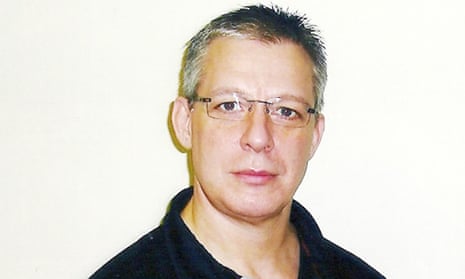Jeremy Bamber, who has been imprisoned for more than 35 years for murdering five members of his family, has said he is “filled with hope” of being released after submitting a fresh legal challenge against his conviction.
Bamber’s lawyers have compiled a dossier running to thousands of pages based on new evidence that challenges his 1986 conviction for the notorious White House Farm murders in Essex. On Wednesday the submission was made to Criminal Cases Review Commission (CCRC), which will now decide if the case should be referred to the court of appeal for a second time.
Mark Newby, Bamber’s solicitor who specialises in miscarriages of justice and helped overturn the wrongful conviction of Victor Nealon after nearly 17 years, said: “Mr Bamber is going back to the CCRC because he got a significant amount of fresh evidence to show the conviction is unsafe. It is now for the CCRC to decide.”
The challenge is based on 347,000 pages of evidence, including Essex police logs, that were originally withheld from Bamber under public interest immunity laws that no longer apply after 30 years.
Bamber said he had “multiple grounds” for an appeal. He told the Guardian: “Our comprehensive submissions contain the evidence to prove that the jury at my trial were not provided with the full facts and that they were misled repeatedly. “I am filled with hope and anticipation that the new submissions to the CCRC will achieve a speedy referral to the court of appeal.”
The CCRC has a duty to refer the case if it believes there is a reasonable chance the court of appeal will quash Bamber’s conviction.
Bamber’s adoptive parents, Nevill and June Bamber, were shot dead inside their Essex farm in the early hours of 7 August 1985, along with their adopted daughter, Sheila Caffell, and her six-year-old twin boys. Bamber, then 24, phoned the police to say his father had called him at 3.26am, saying Caffell had “gone crazy and has the gun”.
Initially, police believed Caffell, a 28-year-old model known as Bambi who had recently been diagnosed with schizophrenia, had fired the shots then turned the gun on herself. But then Bamber’s relatives found a silencer in the farm that was said to contain blood belonging to Caffell. And in September 1985, Bamber’s ex-girlfriend told police he had discussed killing his family. Days later Bamber was charged with the murders.
At trial, the prosecution argued that, motivated by the prospect of inheriting the £436,000 family fortune and considerable land, he had killed all five then placed the rifle in his sister’s hands to make it look like a murder-suicide. It claimed it was impossible for Caffell to have shot herself with the silencer on because her arms were not long enough to pull the trigger and that Nevill Bamber could not have called his son at 3.26am because by then he had been shot.
At the end of the trial in October 1986, the jury was sent out to reach a verdict, but returned to ask the judge for clarification on the silencer and blood evidence. The judge said it contained only Caffell’s blood, and instructed the jury that the silencer “could, on its own, lead them to believe that Bamber was guilty”.
The jury convicted Bamber by a 10 to two majority. He has always maintained his innocence.
But the jury was not told of a letter from the head of biology at Huntingdon Forensic Science Laboratories saying the blood on the silencer could have come from Sheila Caffell or another relative, Robert Boutflour who has since died. Last year a high court judge denied Bamber access to documents that may have suggested a second silencer was found at the scene, but Mr Justice Knowles said new evidence in the case should be considered by the CCRC.
Newby said the new submission contains a “plethora of evidence” from the previously withheld documents pointing to a second silencer. It also includes phone logs to show Nevill Bamber did call his son 10 minutes before Bamber called the police. “If as a result of the fresh evidence, it is accepted that there were two calls including one call from his father and one from Jeremy, then it is an impossibility for Jeremy Bamber to have been at the scene at the relevant time to have committed the offences.” Newby said.
In total Newby said there were eight grounds for appeal including new evidence that the scene had been tampered with by Essex police and that police had seen signs of life inside the house while Bamber was with officers outside.
Newby was first approached by Bamber’s supporters in late 2016. He said: “We would not have spent so much time pursuing this were we not convinced there is a significant evidence to suggest a miscarriage of justice.”
He added: “The evidence now supports the fact that every part of the reported case appears to be untrue, and there is now a new narrative to be told which if accepted by the commission and then in turn the court of appeal should lead to Jeremy Bamber being exonerated.”
The CCRC is expected to take several months to review the dossier. It has rejected two previous appeals by Bamber’s former lawyers. “This is the most substantive submission by a mile,” Newby said.
The CCRC said it could not comment on the case until it had spoken to the family of the victims.
